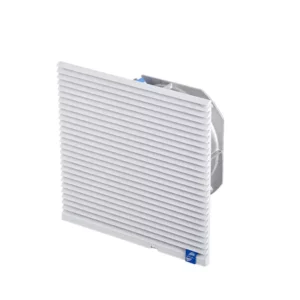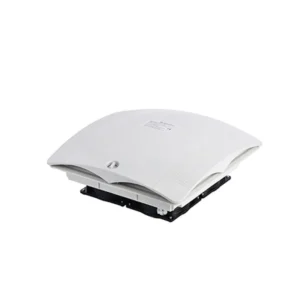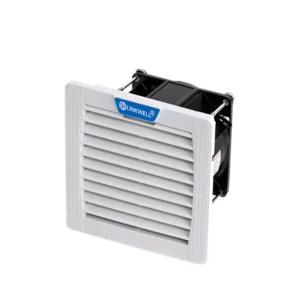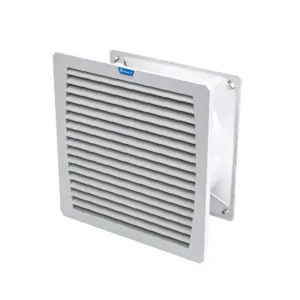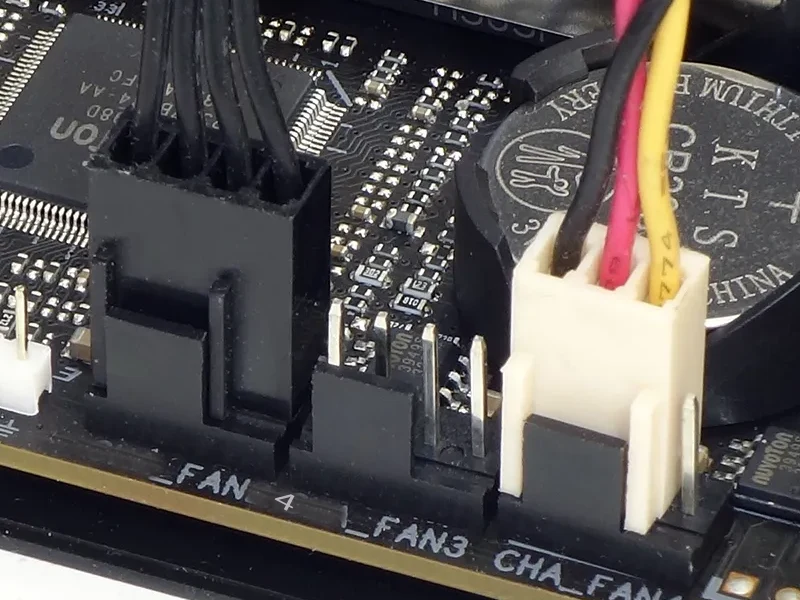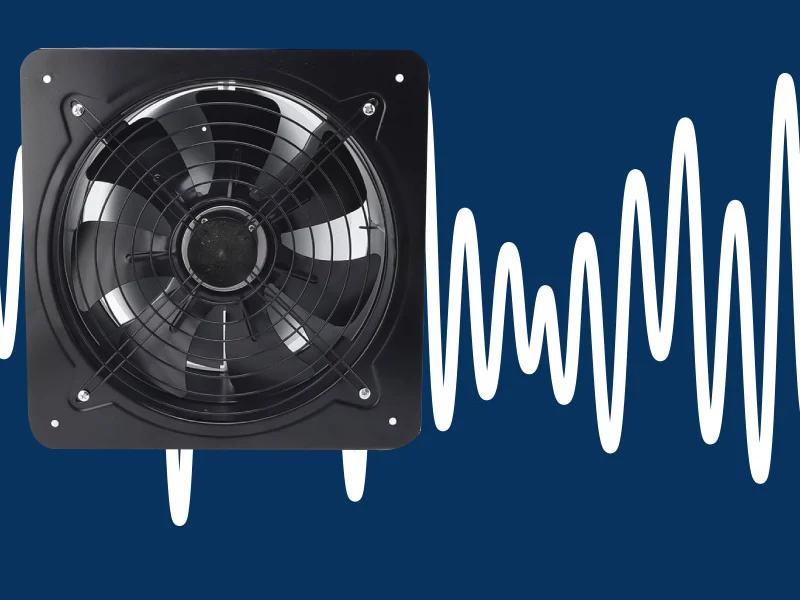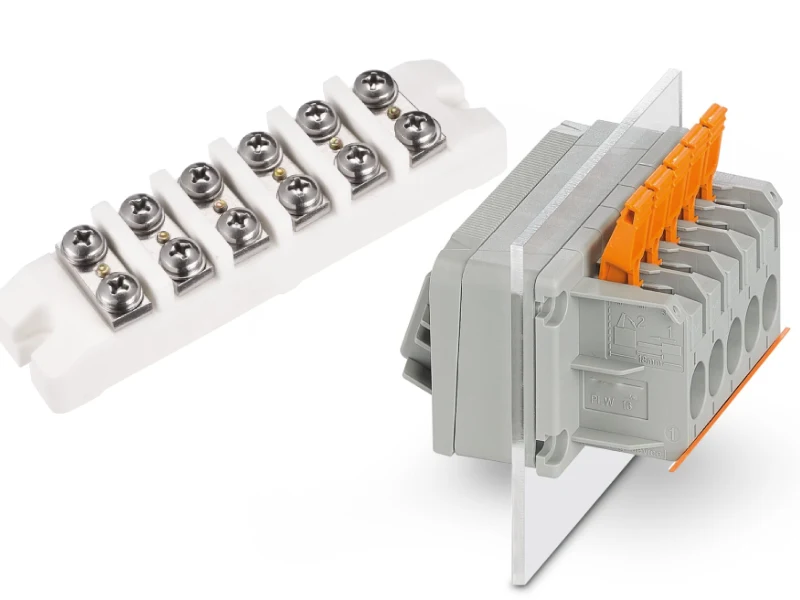You might wonder, Do Greenhouses Need Fans? The answer is yes—fans play a vital role in every greenhouse. Air movement isn’t just about cooling; it’s the secret to healthier plants. When you boost air movement, you help your crops breathe, grow, and stay strong. Take a look at how air movement affects plant growth:
| Aspect | Impact on Plant Growth |
|---|---|
| Gas Exchange | Air movement delivers CO₂ for photosynthesis and removes excess moisture. |
| Heat Exchange | Air movement keeps temperatures stable, protecting plants from stress. |
| Airspeed | The right air movement reduces leaf burn and rot, supporting growth. |
If you’re worried about installing fans, you’re not alone. Many greenhouse owners ask about electricity needs, costs, sizing, placement, and maintenance. Air movement solves many of these issues by creating a uniform environment and cutting down disease risks. Linkwell’s advanced fan solutions make air movement easy and reliable, so you can focus on growing strong, healthy crops.
Key Takeaways
- Fans are essential for healthy plant growth. They improve gas exchange, allowing plants to breathe and photosynthesize effectively.
- Proper air movement prevents diseases by drying leaf surfaces and reducing humidity, which helps keep crops healthy.
- Choosing the right fan size and placement is crucial. Measure your greenhouse and ensure fans are positioned for optimal airflow.
- Regular maintenance of fans enhances efficiency. Clean blades and check for wear to keep your ventilation system running smoothly.
- Investing in energy-efficient fans can lower operating costs while providing reliable climate control for your greenhouse.
Do Greenhouses Need Fans
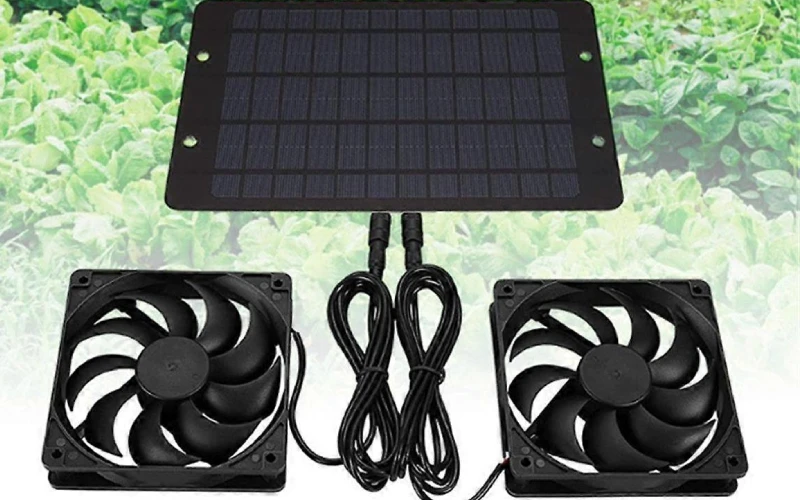
Essential for Plant Health
You might ask yourself, do greenhouses need fans if you already have a sturdy structure and plenty of sunlight. The answer is yes, and here’s why. Fans keep the air moving, which helps your plants breathe and grow. When air stands still, you get uneven temperatures and humidity. That’s bad news for your crops.
Did you know? Circulation fans mix the air layers inside your greenhouse. This keeps temperature and humidity steady, so your plants don’t get stressed.
Let’s break down how fans help your plants thrive:
- Fans deliver fresh CO₂ to your crops, which boosts photosynthesis.
- Air movement keeps moisture levels balanced, so roots and leaves stay healthy.
- Constant airflow stops hot spots from forming, especially during summer. Your plants avoid heat stress and grow stronger.
If you’re wondering, do greenhouses need fans for every crop, the answer is still yes. Whether you grow tomatoes, lettuce, or strawberries, fans make a huge difference. Studies show that fans can improve crop vitality and even out growth rates. Take a look at what happens when ventilation falls short:
| Study | Findings |
|---|---|
| Kawasaki et al. | Local heating boosts pollen viability, fruit count, and weight in tomatoes and cucumbers. |
| Kimura et al. | Poor roof ventilation causes uneven strawberry growth, with up to 69% non-uniformity. |
| Ma et al. | Automated systems reduce crop variability by keeping heat and light even. |
You want your greenhouse to be a place where every plant gets the same chance to grow. Fans help you do that. They keep the climate steady, so you don’t have to worry about one corner being too hot or too humid.
Preventing Disease
Do greenhouses need fans to keep plants healthy? Absolutely. Fans do more than just cool things down. They help prevent diseases that love damp, stagnant air.
- Fans dry out leaf surfaces, which stops fungal diseases like powdery mildew.
- Air movement lowers humidity, making it harder for mold and bacteria to spread.
- Even airflow means fewer spots where disease can take hold.
Let’s look at some real-life examples:
- A lettuce farmer installed fans and saw fewer powdery mildew infections. The leaves stayed dry, and the crop looked healthier.
- A tomato grower used fans to dry the leaves. Leaf spot disease dropped, and the plants grew stronger.
Tip: If you want to keep your greenhouse disease-free, make sure you have enough fans for good air circulation.
During summer, do greenhouses need fans even more? Yes! Hot air pockets can form quickly, putting your plants at risk. Fans break up these pockets and keep the temperature steady. They also help lower humidity on leaf surfaces, which means fewer diseases and better growth.
You might worry about energy costs, but energy-efficient fans save money in the long run. Here’s a quick look at how new fan options compare to old ones:
| Fan Type | Air Movement (m3/h) | Power Consumption (W) | Number of Fans | Total Consumption (W) | Energy Savings (%) |
|---|---|---|---|---|---|
| Old Fan | 5,350 | 240 | 90 | 21,600 | – |
| New Fan Option 1 | 4,850 | 119 | 99 | 11,781 | 45.5 |
| New Fan Option 2 | 6,450 | 190 | 74 | 14,060 | 35 |
Do greenhouses need fans that work with automated climate control? Yes, modern systems use sensors and fans to keep everything just right. You can monitor temperature and humidity, and fans will adjust automatically to keep your plants happy.
If you want healthy crops and fewer headaches, fans are a must-have. Do greenhouses need fans for every season? Yes, because steady airflow keeps your greenhouse productive all year.
Greenhouse Ventilation
Air Circulation
When you step into a greenhouse, you might notice how fresh the air feels. That’s because greenhouse ventilation keeps air moving, which is key for healthy plants. You want air flow that reaches every corner, so your crops get the CO₂ they need for photosynthesis. If air stands still, CO₂ can collect at the top and never reach your plants. Circulation fans help mix the air, making sure every leaf gets a boost.
You should aim for cross-ventilation. This means air enters from one side and exits from the other, sweeping through the greenhouse. Cross-ventilation works best when you use fans and vents together. In winter, experts recommend at least two air changes per hour. In summer, you need one air change per minute for good temperature regulation. For winter, a quarter of the greenhouse’s volume should change every minute. In summer, the whole volume should exchange every minute up to a height of eight feet.
Here’s a quick checklist for better air flow:
- Use circulation fans to keep CO₂ levels even.
- Set up cross-ventilation for steady air movement.
- Adjust fan speed for temperature regulation during hot or cold spells.
Tip: Active ventilation systems like exhaust fans and HAF fans give you more control than passive methods. You can manage air flow, temperature regulation, and humidity with precision.
Humidity and Temperature
Humidity and temperature go hand in hand in a greenhouse. If you let humidity climb too high, you risk fungal outbreaks. Proper ventilation helps you swap moist air for drier air, keeping humidity around 80% RH at 80°F. Most greenhouse crops thrive when the temperature stays between 64°F and 75°F. Fans play a big role in temperature regulation, moving air so hot spots don’t form.
Cross-ventilation also helps prevent mold and bacteria. When you use diffuser kits and fans, you break up stagnant zones where moisture collects. This keeps humidity balanced and lowers the chance of disease. Nocturnal ventilation—running fans at night—can stop condensation and control humidity-dependent diseases.
Here’s why you should focus on air flow and temperature regulation:
- Fans keep humidity in check, reducing mold and fungal risks.
- Cross-ventilation ensures even air flow, so no area gets too damp or too hot.
- Active systems let you grow crops year-round, even in extreme weather.
Note: Sustainable greenhouse ventilation supports plant health, saves energy, and helps you grow better crops with fewer problems.
Linkwell Fan Solutions
Recommended products
Greenhouse Fan Features
When you want reliable climate control in your greenhouse, Linkwell fans give you an edge. These fans use smart technology to help you monitor and adjust airflow from anywhere. You get real-time control, which means your plants always have the best environment. The advanced materials make these fans lighter and quieter, so you don’t have to worry about loud noises disturbing your crops.
Take a look at how Linkwell greenhouse fans stand out:
| Advancement Type | Description | Benefits for You |
|---|---|---|
| Smart Technology Integration | IoT remote monitoring and control | Real-time adjustments, energy savings |
| Advanced Materials | Durable, noise-reducing | Quiet, efficient operation |
| Sustainability Focus | Eco-friendly manufacturing | Meets energy standards |
| Energy Conservation | Reduces energy use by up to 70% | Lower operating costs |
You can choose EC fans that cut energy use by up to 70% compared to old AC fans. These fans need less maintenance because they use a brushless design. You get precise airflow control, which helps your greenhouse stay cool and efficient. PWM speed control lets the fans adjust their speed based on what your plants need. This saves power and keeps your costs down. IP68 waterproofing protects the fans from dust and water, so they work well even in humid or wet conditions.
If you want something special, Linkwell offers customization. You can add your own logo, pick custom packaging, or even change the graphics. This makes your fans unique and fits your brand.
Electrical Enclosure Fan Benefits
You might use electrical enclosure fans to keep your control cabinets cool. Linkwell fans help you avoid overheating and protect sensitive equipment. These fans use weatherproof housing and high-quality bearings, so they last longer and need less attention. You get energy-efficient motors that lower your power bills.
PWM speed control helps these fans run only as fast as needed. This means you save energy when cooling demand drops. The fans also work with thermostats and hygrostats, so you can automate climate control. IP68 waterproofing keeps the fans running in tough conditions, even if things get wet or dusty.
If you need a custom solution, Linkwell makes it easy. You can order fans with your own logo or packaging, starting at 500 pieces. This helps you match your equipment and keep everything looking professional.
Tip: Linkwell fans give you peace of mind. You get strong airflow, smart controls, and tough protection for your greenhouse and electrical systems.
Choosing the Right Fan
Sizing and Placement
Picking the right fan for your greenhouse isn’t just about grabbing the biggest one you can find. You want a fan that matches your space and helps you get good ventilation. Here’s a simple way to figure out what you need:
- Measure your greenhouse and calculate the CFM (cubic feet per minute) needed for your space.
- Make sure your intake shutters are at least 1.5 times bigger than your exhaust fans. This helps increase air flow and keeps things balanced.
- Place exhaust fans and intake shutters at waist to head height for the best air movement.
Fan placement matters just as much as size. If you set up fans the right way, you can regulate temperature and keep every corner of your greenhouse comfortable. Check out this table to see how fan placement affects temperature differences:
| Condition | Temperature Difference (°F) |
|---|---|
| HAF Fans Off (Floor to Bench) | 1.2 |
| HAF Fans Off (Floor to 9ft) | 3.3 |
| HAF Fans On (Floor to Bench) | Similar |
| HAF Fans On (Floor to 9ft) | 1.9 |
You should position fans between 4 feet above your crops and the gutter. Keep them at least 4 feet from the side wall to avoid friction loss. For best results, place the first row of fans about 10 feet from the wall. Space fans 30 feet apart for tall crops and 60 feet for shorter ones. If you want even better air mixing, set up fans to blow in opposite directions.
Linkwell offers customizable fan sizes and mounting options, so you can match your greenhouse layout and crop needs.
Maintenance Tips
Keeping your fans in top shape means you get good ventilation all year. Here are some easy tips:
- Clean fan blades and housing regularly to prevent dust buildup. Dust can cut efficiency by up to 30%.
- Lubricate moving parts and bearings during cleaning. This keeps everything running smoothly.
- Inspect belts for tension and replace any that look worn or damaged.
- Check electrical cords for wear and swap them out if needed.
- Make sure fans rotate in the right direction to maximize airflow.
- Remove anything blocking the fan to keep air moving freely.
- Document all maintenance in a log. This helps you track what you’ve done and spot problems early.
- Calibrate thermostats and humidistats so fans run when your greenhouse needs them most.
Here’s a quick look at how often you should check your fans:
| Frequency | Maintenance Task |
|---|---|
| Daily | Visual inspection of the system. |
| Monthly | Clean pulleys, blades, and filters; check belts and lubricate parts. |
| Annually | Inspect wiring, ductwork, coils, and insulation. |
If you choose Linkwell fans, you get durable motors and easy-to-clean designs. You can also customize your maintenance plan with their expert support.
Tip: Regular maintenance helps your fans last longer and keeps your greenhouse climate steady.
You want your greenhouse to thrive, right? Proper ventilation gives your plants the CO₂ they need, keeps diseases away, and helps pollination. Linkwell fans stand out because they deliver even airflow, boost yields, and resist rust. You get lower energy bills and long-lasting performance. Before you choose a fan, think about your greenhouse size, climate, plant needs, and budget. If you want reliable climate control, Linkwell fans make it easy to create the perfect environment for healthy crops.
FAQ
How often should you run fans for proper greenhouse ventilation?
You should run fans all year. Good ventilation keeps air fresh and helps plants grow. In summer, run fans more often to prevent heat buildup. In winter, keep air moving to stop humidity from rising. Adjust fan speed based on temperature and crop needs.
Can you use natural ventilation instead of fans?
Natural ventilation works in small greenhouses with good airflow. If you have a larger space or high humidity, you need fans. Fans give you control over air movement. You can adjust them for temperature, humidity, and disease prevention.
What signs show poor ventilation in your greenhouse?
Look for mold, uneven plant growth, and hot spots. If leaves stay wet or you smell musty air, you need better ventilation. Plants may wilt or develop diseases. Fans help you fix these problems by keeping air moving.
Do fans help with humidity control and disease prevention?
Yes! Fans lower humidity and dry leaf surfaces. Good ventilation stops mold and mildew. You protect your crops from fungal diseases. Air movement also helps prevent bacteria from spreading. Healthy plants need steady airflow.
How do you choose the right fan for greenhouse ventilation?
Measure your greenhouse size. Check the airflow rating (CFM) of each fan. Place fans for even ventilation. Pick fans with waterproof features for humid areas.

